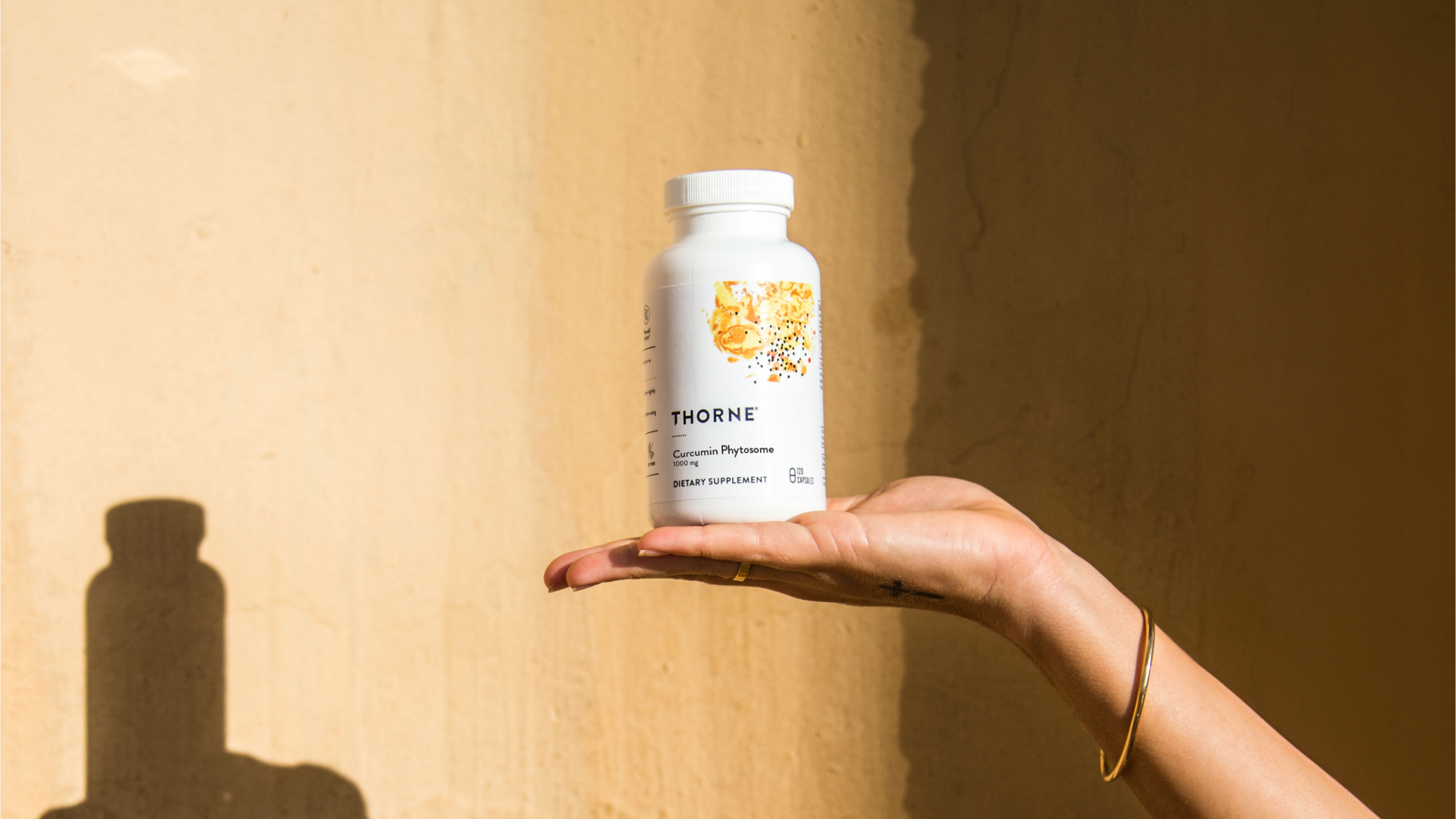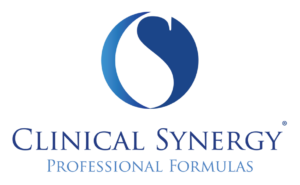You’ve heard about the opioid epidemic. But behind this devastating spike in medication use and dependency, there’s another epidemic: chronic pain.
It’s estimated today that chronic pain impacts around 40% of American adults.1 That’s 53 million people living under the oppressive condition of constant pain. And this doesn’t even include another 21 million dealing with more intensive, high-impact chronic pain that prevents them from living normal lives. High impact chronic pain is a debilitating condition that can impact anyone, but it’s more common among older people and women.
The tragic reality is that chronic pain hits more people than cancer, diabetes and heart disease combined. And with conventional medicine, many of these people don’t get to experience the relief that they desperately need, being prescribed instead pharmaceutical painkillers with a long list of dangerous side effects.
But what most people don’t realize is that even mild, over-the-counter (OTC) pain killers can have serious negative impacts on your health.
The good news is that there are natural alternatives that can help address acute and chronic pain, while delivering additional health benefits for overall wellness.

How Pain Changes You
Chronic pain changes everything. It impacts every part of your life, making simple tasks more difficult, and difficult tasks seem impossible. Quality of life is dramatically reduced.
Under these circumstances, it’s easy to see why so many people would do anything to put an end to the pain—even if it means enduring long-term health risks that come with taking painkillers.
A Look Inside the Opioid Crisis
Over the last two decades, there has been a steep rise in prescriptions for highly addictive opioid pain medications of varying strengths. But as the number of prescriptions increased, so did the number of overdoses and deaths.2 Not to mention the lives derailed by dependency and overuse of these incredibly powerful and dangerous drugs.
To complicate this epidemic: opioid drugs don’t stop, prevent or heal the source of pain.3 In fact, they actually slow healing, actively prolonging your pain.4 Plus, these drugs come with devastating side effects and complications, including: 5,6
- Heavy sedation
- Respiratory problems
- GI problems (vomiting, constipation)
- Depression
- Increased pain sensitivity
- Immune suppression
- Neurological impacts
- Liver problems
- Addiction and dependency
Another complicating factor is that because of the widespread opioid crisis, many doctors are increasingly sceptical of pain patients who may need medication, at least temporarily. Meanwhile, many others with chronic pain are looking to avoid addictions and heavy side effects—so they turn to OTC pain killers.
But these drugs too, are shown to cause problems.
All Pain Drugs Come with Side Effects
The truth is, there is no completely safe pharmaceutical pain reliever.
The dangers of prescription painkillers are well documented, but they warrant a reminder just how problematic they can be—especially when used over time. Vioxx for example proved to be so dangerous it was pulled from the market. Other forms, like the drug Celebrex7 continue to be prescribed regularly despite their well-known risks, including heart attacks and strokes.
Let’s take a look at OTC (non-prescription) pain medication like ibuprofen or aspirin.
These are called NSAIDs (nonsteroidal anti-inflammatory drugs) and they’re by far the most commonly used pain medications. When used sparingly, NSAIDs can offer important relief from chronic pain. For optimal safety, use the lowest possible dose for the shortest possible period of time, to get relief. It’s also very important to cycle off of these drugs and take breaks for 7 to 10 days each month.
However, increasing research shows that NSAIDs can actually be quite dangerous – even deadly.8 Specifically, NSAIDs are shown to increase your risk of:
- Cardiovascular problems, including heart attack9,10
- GI inflammation and bleeding11,12
- Liver damage13
- Kidney disease14
Then there’s acetaminophen, sometimes called the “safest” pain medication. However, this specific drug can be devastating for your liver. In fact, acetaminophen plays a role in nearly half of all cases of acute liver failure! It’s the reason behind 20% of all liver transplants.15
Fortunately, there are many safe, effective, natural options to turn to that won’t put your vital organs at risk. Studies show that the right natural painkillers can make a big difference over time… by addressing the root causes of chronic pain, while modulating neurological pain pathways and supporting greater strength and vitality.
What’s Underneath Chronic Pain?
Chronic pain can be traced back to a root cause, like an injury, infection or a disease. The most common causes of chronic pain include:
- Lower back injury
- Arthritis
- Headaches
- Nerve damage
- Conditions like fibromyalgia, cancer, and multiple sclerosis (MS)
The root source of pain, whether acute or chronic, is inflammation.16 A normal and necessary immune system response to threats, inflammation is part of a healthy response system—but that means it’s supposed to shut off when the threat has subsided. But with chronic pain conditions, inflammatory signals rage on, leaving you trapped in a cycle of destruction.
9 Ways to Naturally Ease Chronic Pain
These nine natural approaches can offer both short term relief and long-term pain management and reduction—something prescription drugs generally won’t do. By addressing the pain process, these safe, effective choices stop pain and inflammation in different places along the path, allowing you to be in control of your pain. And unlike prescription and OTC drugs, you can safely use these eight natural pain-relieving methods in any combination … for your perfect pain management plan.
- Gentle movement — yoga, tai chi and qi gong, have all been shown to offer significant relief for chronic pain conditions including arthritis and lower back pain.17
- Meditation — mindful breathing and meditation can reduce pain intensity by engaging areas of the brain associated with pain processing.18
- Visualization — alone or part of guided meditation, visualization has been shown to help relieve pain, and reduce stress and depression in chronic pain patients.19
- Honokiol — a highly active extract purified from magnolia, honokiol plays multiple roles in pain management: Reducing inflammation, supporting neurological wellness, and actively quieting pain signals for effective pain relief.22,23,24
- Curcumin — the key active compound in turmeric, curcumin extract relieves pain and inflammation in patients suffering from conditions such as arthritis and migraines.25,26,27
- Modified citrus pectin (MCP) — this super-nutrient ingredient is extensively researched and shown to block the alarm protein galectin-3, that triggers the inflammatory cascade.28,29 By blocking galectin-3, MCP reduces the inflammation and fibrosis behind chronic pain, delivering lasting relief.30
- Boswellia — extracted from frankincense, Boswellia stops pain by controlling the 5-LOX inflammation pathway, as well as increasing pain threshold and tolerance.31,32
- PEMF therapy — pulsed electromagnetic field therapy (PEMF) targets your body’s electromagnetic field to relieve deep, chronic pain, as well as body aches, arthritis, and other pain-related conditions. PEMF involves using a device that emits electromagnetic waves through your body, stimulating healing and cell rejuvenation. It’s completely safe, with no known side effects. In addition to pain relief, PEMF is also known to strengthen the body overall, enhance sleep, ease anxiety, optimize memory and boost mood.
Pain-Free and Healthy
The truth is, pain is a natural part of our biological survival system. But like so many other alarms in the body, pain signals can become trapped in a destructive cycle of inflammation, and further damage and degradation of joints, tissues and organs. With these natural solutions, however, you can address the underlying causes of pain, while reducing inflammatory signals, supporting neurological wellness, and promoting greater long-term health in the process.
- Zelaya CE, Dahlhamer JM, Lucas JW, Connor EM. Chronic pain and high-impact chronic pain among U.S. adults, 2019. NCHS Data Brief, no 390. Hyattsville, MD: National Center for Health Statistics. 2020.
- Marshall B, Bland MK, Hulla R, Gatchel RJ. Considerations in addressing the opioid epidemic & chronic pain within the USA. Pain Manag. 2019 Mar 1;9(2):131-138.
- Deyo RA, Von Korff M, Duhrkoop D. Opioids for low back pain. BMJ. 2015;350:g6380. Published 2015 Jan 5. doi:10.1136/bmj.g6380
- Shanmugam VK, Couch KS, McNish S, Amdur RL. Relationship between opioid treatment and rate of healing in chronic wounds. Wound Repair Regen. 2017;25(1):120-130. doi:10.1111/wrr.12496
- Plein LM, Rittner HL. Opioids and the immune system – friend or foe. Br J Pharmacol. 2018 Jul;175(14):2717-2725. doi: 10.1111/bph.13750. Epub 2017 Mar 23. PMID: 28213891; PMCID: PMC6016673.
- Benyamin R, Trescot AM, Datta S, Buenaventura R, Adlaka R, Sehgal N, Glaser SE, Vallejo R. Opioid complications and side effects. Pain Physician. 2008 Mar;11(2 Suppl):S105-20. PMID: 18443635.
- Caldwell B, Aldington S, Weatherall M, Shirtcliffe P, Beasley R. Risk of cardiovascular events and celecoxib: a systematic review and meta-analysis. J R Soc Med. 2006;99(3):132-140. doi:10.1258/jrsm.99.3.132
- Bindu S, Mazumder S, Bandyopadhyay U. Non-steroidal anti-inflammatory drugs (NSAIDs) and organ damage: A current perspective. Biochem Pharmacol. 2020;180:114147. doi:10.1016/j.bcp.2020.114147
- Bally M, Dendukuri N, Rich B, Nadeau L, Helin-Salmivaara A, Garbe E, Brophy JM. Risk of acute myocardial infarction with NSAIDs in real world use: bayesian meta-analysis of individual patient data. BMJ. 2017 May 9;357:j1909. doi: 10.1136/bmj.j1909. PMID: 28487435; PMCID: PMC5423546.
- Gislason GH, Rasmussen JN, Abildstrom SZ, Schramm TK, Hansen ML, Fosbøl EL, Sørensen R, Folke F, Buch P, Gadsbøll N, Rasmussen S, Poulsen HE, Køber L, Madsen M, Torp-Pedersen C. Increased mortality & cardiovascular morbidity associated with use of nonsteroidal anti-inflammatory drugs in chronic heart failure. Arch Intern Med. 2009 Jan 26;169(2):141-9.
- Goldstein JL, Cryer B. Gastrointestinal injury associated with NSAID use: a case study and review of risk factors and preventative strategies. Drug Healthc Patient Saf. 2015;7:31-41. Published 2015 Jan 22. doi:10.2147/DHPS.S71976.
- Lee MW, Katz PO. Nonsteroidal Antiinflammatory Drugs, Anticoagulation, & Upper Gastrointestinal Bleeding. Clin Geriatr Med. 2021 Feb;37(1):31-42. doi: 10.1016/j.cger.2020.08.004. Epub 2020 Nov 2.
- Sriuttha P, Sirichanchuen B, Permsuwan U. Hepatotoxicity of Nonsteroidal Anti-Inflammatory Drugs: A Systematic Review of Randomized Controlled Trials. Int J Hepatol. 2018;2018:5253623. Published 2018 Jan 15. doi:10.1155/2018/5253623.
- Lucas GNC, Leitão ACC, Alencar RL, Xavier RMF, Daher EF, Silva Junior GBD. Pathophysiological aspects of nephropathy caused by non-steroidal anti-inflammatory drugs. J Bras Nefrol. 2019;41(1):124-130. doi:10.1590/2175-8239-JBN-2018-0107.
- Yoon E, Babar A, Choudhary M, Kutner M, Pyrsopoulos N. Acetaminophen-Induced Hepatotoxicity: a Comprehensive Update. J Clin Transl Hepatol. 2016;4(2):131-142.
- Omoigui S. The biochemical origin of pain: the origin of all pain is inflammation & the inflammatory response. Part 2 of 3 – inflammatory profile of pain syndromes. Med Hypotheses. 2007;69(6):1169-1178. doi:10.1016/j.mehy.2007.06.033.
- Kong LJ, Lauche R, Klose P, et al. Tai Chi for Chronic Pain Conditions: A Systematic Review and Meta-analysis of Randomized Controlled Trials. Sci Rep. 2016;6:25325. Published 2016 Apr 29. doi:10.1038/srep25325.
- Zeidan F, Martucci KT, Kraft RA, Gordon NS, McHaffie JG, Coghill RC. Brain mechanisms supporting the modulation of pain by mindfulness meditation. J Neurosci. 2011 Apr 6;31(14):5540-8. doi: 10.1523/JNEUROSCI.5791-10.2011.
- Onieva-Zafra MD, García LH, Del Valle MG. Effectiveness of guided imagery relaxation on levels of pain and depression in patients diagnosed with fibromyalgia. Holist Nurs Pract. 2015 Jan-Feb;29(1):13-21. doi: 10.1097/HNP.0000000000000062. PMID: 25470476.
- Vennos C, Melzer J, Saller R. Clinical studies on the efficacy and safety of Padma 28, a complex herbal formulation from Tibetan medicine: an overview. Forsch Komplementmed. 2013;20 Suppl 2:25-30. doi: 10.1159/000351722. Epub 2013 Jun 21. PMID: 23860110.
- Drabaek H, Mehlsen J, Himmelstrup H, Winther K. A botanical compound, Padma 28, increases walking distance in stable intermittent claudication. Angiology. 1993 Nov;44(11):863-7. doi: 10.1177/000331979304401103. PMID: 8239057.
- Khalid S, Khan A, Shal B, Ali H, Kim YS, Khan S. Suppression of TRPV1 and P2Y nociceptors by honokiol isolated from Magnolia officinalis in 3rd degree burn mice by inhibiting inflammatory mediators. Biomed Pharmacother. 2019 Jun;114:108777. doi: 10.1016/j.biopha.2019.108777. Epub 2019 Mar 27. PMID: 30925455.
- Khalid S, Ullah MZ, Khan AU, Afridi R, Rasheed H, Khan A, Ali H, Kim YS, Khan S. Antihyperalgesic Properties of Honokiol in Inflammatory Pain Models by Targeting of NF-κB and Nrf2 Signaling. Front Pharmacol. 2018 Mar 20;9:140. doi: 10.3389/fphar.2018.00140. PMID: 29615898; PMCID: PMC5869907.
- Munroe ME, Arbiser JL, Bishop GA. Honokiol, a natural plant product, inhibits inflammatory signals and alleviates inflammatory arthritis. J Immunol. 2007 Jul 15;179(2):753-63. doi: 10.4049/jimmunol.179.2.753. PMID: 17617564.
- Sahebkar A, Henrotin Y. Analgesic Efficacy and Safety of Curcuminoids in Clinical Practice: A Systematic Review and Meta-Analysis of Randomized Controlled Trials. Pain Med. 2016 Jun;17(6):1192-202. doi: 10.1093/pm/pnv024. Epub 2015 Dec 14. PMID: 26814259.
- Shep D, Khanwelkar C, Gade P, Karad S. Efficacy and safety of combination of curcuminoid complex and diclofenac versus diclofenac in knee osteoarthritis: A randomized trial. Medicine (Baltimore). 2020;99(16):e19723. doi:10.1097/MD.0000000000019723.
- Bulboacă AE, Bolboacă SD, Stănescu IC, Sfrângeu CA, Bulboacă AC. Preemptive Analgesic and Antioxidative Effect of Curcumin for Experimental Migraine. Biomed Res Int. 2017;2017:4754701. doi:10.1155/2017/4754701.
- Prabhavathi K, Chandra US, Soanker R, Rani PU. A randomized, double blind, placebo controlled, cross over study to evaluate the analgesic activity of Boswellia serrata in healthy volunteers using mechanical pain model. Indian J Pharmacol. 2014;46(5):475-479. doi:10.4103/0253-7613.140570
- Siddiqui MZ. Boswellia serrata, a potential antiinflammatory agent: an overview. Indian J Pharm Sci. 2011;73(3):255-261. doi:10.4103/0250-474X.93507
- Xu GR, Zhang C, Yang HX, Sun JH, Zhang Y, Yao TT, Li Y, Ruan L, An R, Li AY. Modified citrus pectin ameliorates myocardial fibrosis and inflammation via suppressing galectin-3 and TLR4/MyD88/NF-κB signaling pathway. Biomed Pharmacother. 2020 Jun;126:110071.
- Eliaz I, Raz A. Pleiotropic Effects of Modified Citrus Pectin. Nutrients. 2019 Nov 1;11(11):2619. doi: 10.3390/nu11112619. PMID: 31683865; PMCID: PMC6893732.
- Ma Z, Han Q, Wang X, Ai Z, Zheng Y. Galectin-3 Inhibition Is Associated with Neuropathic Pain Attenuation after Peripheral Nerve Injury. PLoS One. 2016 Feb 12;11(2):e0148792. doi: 10.1371/journal.pone.0148792. PMID: 26872020; PMCID: PMC4752273.
Share:
Related Posts

Thorne Celebrates 40 Years of Good Health
Maggie Chandler April 12, 2024 As it’s often said at Thorne, healthy ageing is a gift. It’s about embracing the way you feel, your experiences,

Healthy Coffee Alternatives: When to Quit Coffee & What to Drink Instead
Dr Thomas Wnorowski February 16, 2024 Key Points: Does the idea of quitting coffee make you feel all sorts of (terrible) things? It’s common. But

How Your Social Network Impacts Your Mental Health
Austin Ruff April 17, 2024 Humans are inherently social creatures. It’s in our nature to connect and want to be connected to the people around

Microbiota-Gut-Brain Axis: Behaviour and Dementia Implications
People take supplements to improve or optimize their health. So what happens when you look at the label, and the ingredient list is filled with

Gut Bacteria and GABA
People take supplements to improve or optimize their health. So what happens when you look at the label, and the ingredient list is filled with


